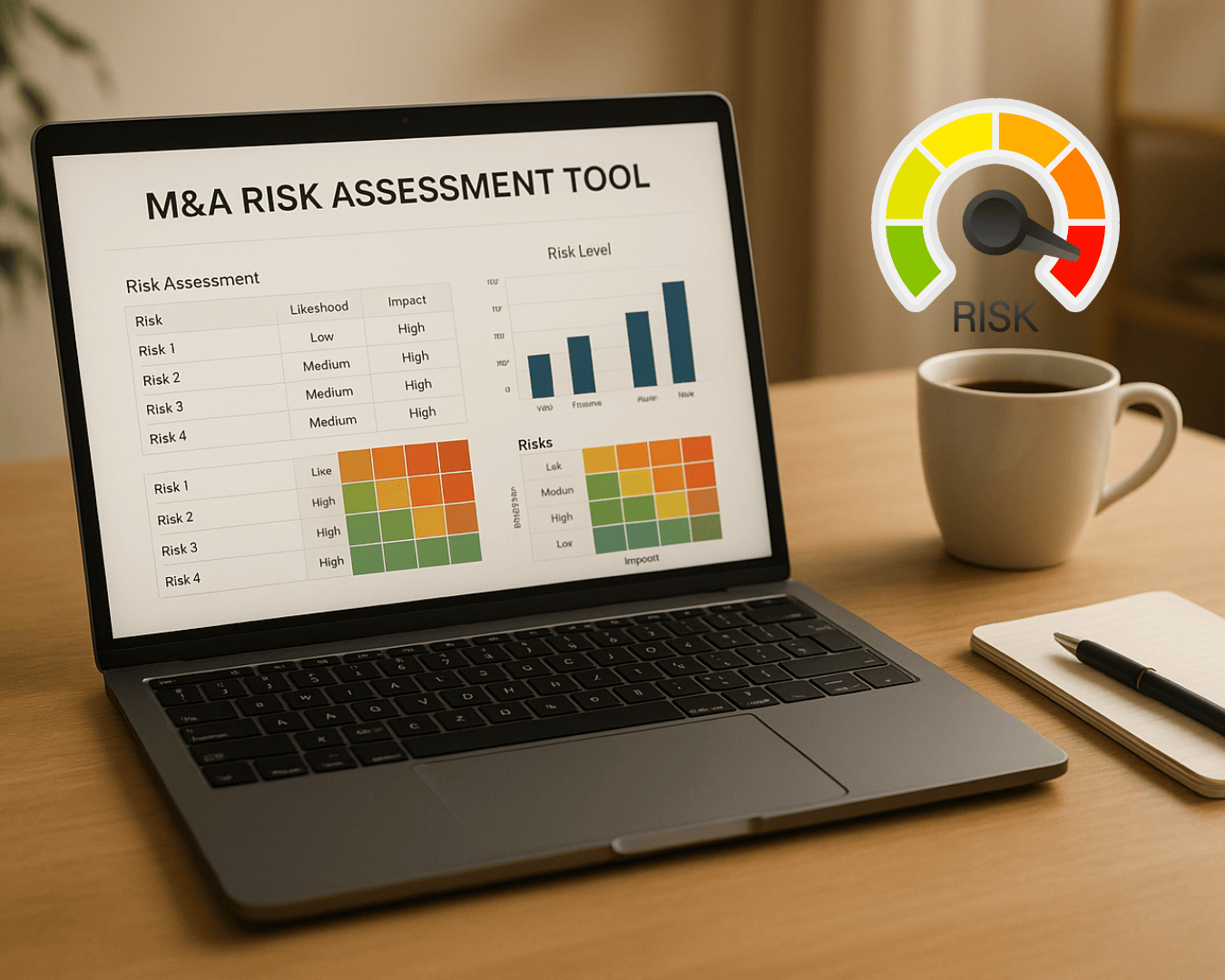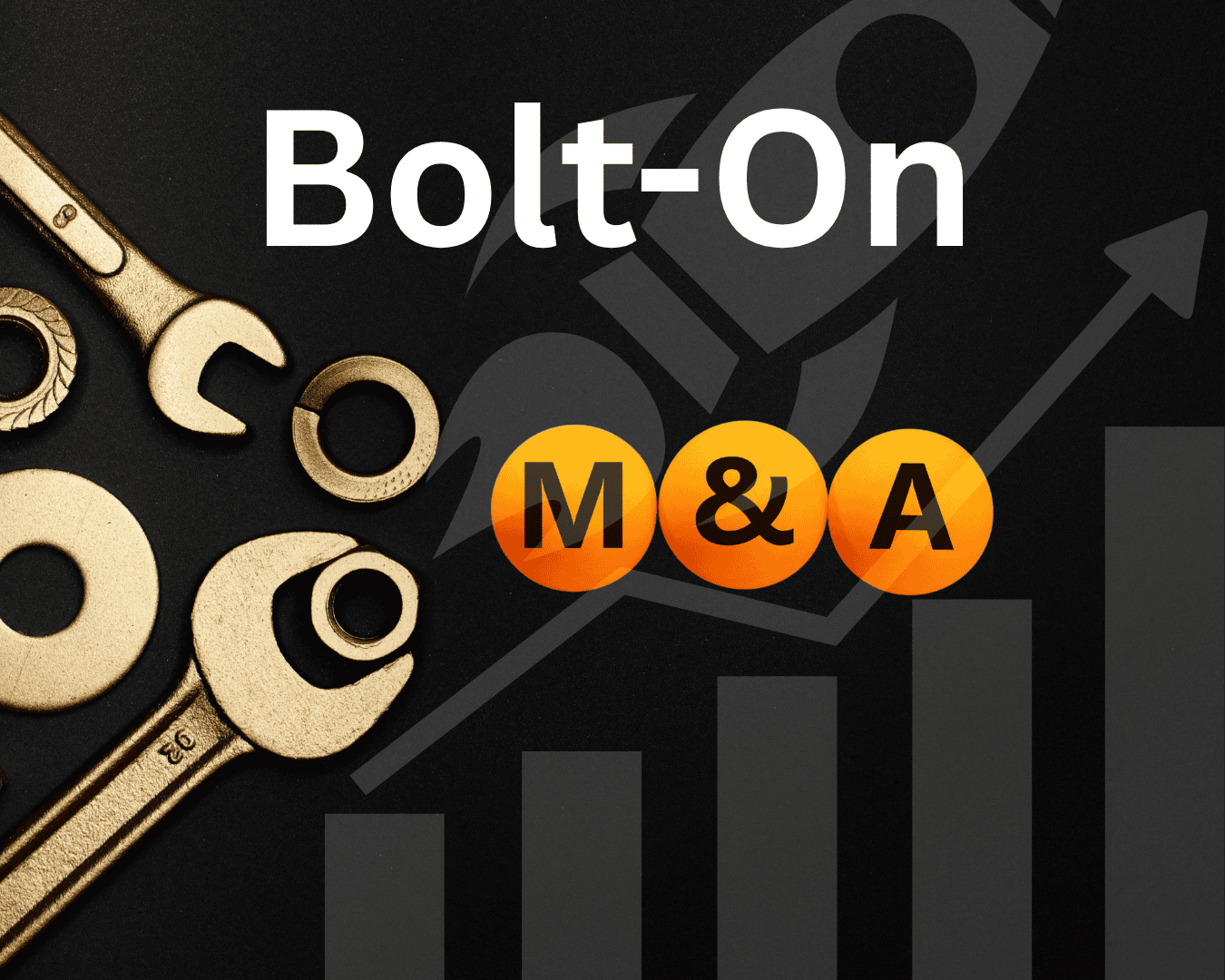When small businesses change ownership or leadership, the transfer of knowledge is often the deciding factor between smooth continuity and operational chaos. Many businesses struggle because critical expertise - especially unwritten insights - remains with outgoing owners or key staff. Here's what matters most:
- Knowledge transfer involves sharing explicit information (like procedures and workflows) and tacit insights (like customer relationships and problem-solving skills).
- Without proper planning, businesses face operational gaps, inefficiencies, and financial risks. Studies show new employees can lose up to 200 hours trying to fill these gaps.
- Success depends on trust, leadership involvement, and practical methods like job shadowing, mentorship, process mapping, and technology tools.
To avoid disruptions, both outgoing and incoming owners must prioritize clear documentation, hands-on learning, and open communication. Early planning and structured approaches are the keys to preserving business value and ensuring a smooth transition.
STEP BY STEP Succession planning for small business owners
Key Factors That Affect Knowledge Transfer Success
The success of knowledge transfer during small business transitions depends on several important factors. Recognizing these elements can help both buyers and sellers navigate the handover process more effectively.
Workplace Relationships and Trust
Strong connections between outgoing and incoming leaders are critical for smooth knowledge transfer. Without trust, departing staff may hold back important details or offer incomplete guidance.
Building trust starts with openness. Outgoing leaders should share their experiences honestly, including their mistakes and the lessons they’ve learned, to create an environment where learning and improvement are encouraged. This openness reassures new leaders about the quality and reliability of the information being shared.
Trust plays a particularly important role in transferring tacit knowledge - the unwritten insights like customer preferences, informal problem-solving methods, and workplace norms that develop over time. These insights are best shared through direct, comfortable interactions where both parties feel secure discussing sensitive business matters. Trust isn’t just limited to leadership; employees who feel confident about their job security are also more likely to contribute their knowledge and assist in training new leadership.
How Leaders Guide Transitions
Trust alone isn’t enough - leadership must actively steer the transition process. Effective leaders set the tone by promoting a knowledge-sharing culture, organizing resources, and crafting a clear strategy.
The outgoing leader’s involvement is a major factor in how well the transition goes. Leaders who encourage curiosity and adaptability create an atmosphere where learning thrives. This might involve attending training sessions, answering questions, and showing genuine interest in the success of the incoming owner.
Warren Bennis once said, "Leadership is the capacity to translate a vision into reality".
This quote underscores the importance of leaders explaining not just what decisions are made but why they’re made. Mentorship and shadowing programs are especially useful here, allowing new owners to watch the decision-making process in action and understand the reasoning behind it. Stories and personal experiences shared by the outgoing leader can also provide valuable context that written procedures often miss.
A well-planned transition involves the outgoing owner gradually stepping back while staying available for guidance. This approach allows new leaders to gain confidence while still having access to critical knowledge, ensuring the business retains its value during the process.
Working with Limited Resources
Small businesses often face time, budget, and staffing challenges when it comes to knowledge transfer. However, even with these constraints, effective practices can still be implemented. Direct, person-to-person knowledge sharing (tacit-to-tacit transfer) is often more effective than trying to document everything in written form.
Time is one of the biggest challenges. Business owners must juggle daily operations with the need to pass on essential knowledge. Focusing on critical areas - like maintaining customer relationships, key operational workflows, and financial management - can ensure that the most important information is prioritized.
Even with tight budgets, there are practical ways to transfer knowledge, such as:
- Mentorship programs led by experienced team members.
- Simple checklists for key processes.
- Pairing new leaders with seasoned staff for on-the-job learning.
- Using straightforward tools like shared drives or internal wikis.
When personnel are limited, and knowledge is concentrated among a few key individuals, it’s essential to break down the owner’s responsibilities into manageable knowledge areas and address each systematically.
As Peter Drucker noted, "knowledge has become the key economic resource and the dominant - and perhaps even the only - source of competitive advantage".
Despite resource challenges, protecting and transferring this knowledge is vital for ensuring the business’s future success. Managing resources wisely can make all the difference in achieving a smooth and effective transition.
Practical Methods and Tools for Knowledge Transfer
Understanding the factors that influence successful knowledge transfer is just the start. The real challenge lies in implementing methods that work, especially for small businesses that need simple and cost-effective solutions. By combining clear documentation, hands-on learning, and modern technology, businesses can ensure a smooth transition rather than a chaotic handover. Let’s break down some practical approaches that blend these strategies effectively.
Creating Documentation and Process Maps
Process maps are like visual blueprints for how workflows operate. They help identify inefficiencies, clarify roles, and streamline operations, making them incredibly valuable for new owners stepping into a business. Research shows that projects focused on process mapping can boost productivity by 15–30% for knowledge workers and as much as 30–50% for back-office staff. With nearly all companies documenting procedures by 2015, and the market for related tools projected to grow from $1.94 billion in 2024 to $2.16 billion in 2025, the importance of this method is clear.
Good process maps highlight key steps, responsibilities, and potential problem areas. Different techniques, like flowcharts for straightforward tasks, swimlane diagrams for processes involving multiple departments, and SIPOC maps for eliminating waste, can help tailor documentation to specific needs.
Case studies highlight the impact of process mapping. A financial institution used swimlane diagrams to overhaul its customer onboarding, cutting the time from 12 days to just 3 days. Similarly, an insurance company reduced claims processing times by 45% after standardizing exceptions in their workflow.
However, there’s a balance to strike. Documentation should be detailed enough for frontline employees to follow but also provide high-level overviews for decision-makers. Focus on processes with the most room for improvement or those that carry the highest risks if errors occur.
Learning Through Direct Experience
While documentation is essential, some knowledge is best learned through direct, hands-on experience. Research indicates that transferring tacit knowledge - skills and insights that are hard to put into words - is more effective in small and medium businesses when done person-to-person rather than solely through written materials.
Methods like job shadowing, guided experiences, paired work, and cross-training help new owners gain firsthand understanding. For example:
- Job shadowing lets new owners observe experienced individuals in action, learning by watching.
- Guided experience allows seasoned employees to share their expertise directly, explaining not just what to do but why.
- Paired work encourages collaboration and practical learning by teaming up individuals on a task.
- Cross-training programs expose new owners to multiple departments, while mentorship programs create ongoing support systems.
These approaches ensure that critical, experience-based knowledge is passed along effectively.
Using Technology for Knowledge Transfer
While hands-on learning captures the subtleties of tacit knowledge, technology plays a crucial role in organizing and sharing explicit information. Modern tools make it easier to store, search, and access documents while connecting team members. Knowledge management systems today offer features like cloud integration, real-time data access, and AI-driven search capabilities, which make retrieving important information much simpler.
The benefits of prioritizing knowledge transfer are striking. Companies that do so are 4.5 times more likely to have highly engaged employees, and they often see a 25% boost in productivity along with a 35% drop in employee turnover. Additionally, organizations that emphasize shared learning report being 92% more innovative and achieving 52% higher productivity.
Affordable tools like Atlassian Confluence, Notion, and Microsoft SharePoint are widely available, with free or competitively priced options. For businesses undergoing acquisitions, platforms like Clearly Acquired offer specialized tools to manage transitions. Their features - like private data rooms and AI-powered deal management - help secure and streamline knowledge transfer during such critical periods.
The key to success lies in choosing tools that align with your team’s comfort level and integrating them seamlessly into existing workflows. While technology can organize and store information effectively, it’s the human element - conversations, mentorships, and direct collaboration - that ensures deeper insights are understood and carried forward.
sbb-itb-a3ef7c1
Common Problems and How to Solve Them
Transitions in small businesses can be tricky, especially when it comes to transferring knowledge. With limited staff and tight schedules, it’s no surprise that these transitions often feel overwhelming. Adding to the pressure is the fact that about 75% of an average owner’s net worth is tied up in their business, making any misstep a costly one. Recognizing common challenges and planning practical solutions can help ensure a smoother handover.
Time Limits and Missing Documentation
Time is often the biggest hurdle in small business transitions. Unlike larger companies with dedicated teams for handovers, small businesses usually rely on a handful of people - often with the outgoing owner juggling multiple responsibilities. When the timeline is shortened due to unforeseen circumstances like health issues or market demands, documenting processes thoroughly becomes even harder.
Many small business owners operate without formal procedures, relying instead on their memory and years of experience. This means critical information - like vendor relationships, pricing strategies, or customer preferences - may not be written down anywhere.
A phased handover can help address this. Start by focusing on daily operations, then move on to monthly and seasonal processes. This approach gives the incoming owner time to learn gradually without disrupting the business. To fill documentation gaps, use simple tools like voice recorders or video cameras to capture key processes. These recordings can later be transcribed and organized into a more formal format. Regular check-ins between the outgoing and incoming owners can also help clarify any questions along the way.
Unwritten Knowledge and Business Disruptions
One of the toughest challenges in a transition is transferring tacit knowledge - those unwritten insights gained through years of hands-on experience. For example, knowing which customers are slow to pay, how seasonality impacts business, or the best way to handle tricky suppliers often resides in the outgoing owner’s head. This type of knowledge is best passed on through direct, face-to-face interactions.
Another issue is the risk of disruptions. Small businesses thrive on personal relationships and consistency, so a change in ownership can make customers uneasy. Key employees might consider leaving, and suppliers may rethink credit terms or payment schedules.
To tackle these risks, try a knowledge mapping exercise where the outgoing owner outlines informal processes and unwritten rules. This could include insights into customer habits, employee motivations, supplier dynamics, and operational shortcuts. Storytelling sessions can also be a powerful way to transfer knowledge, giving the new owner real-life examples of how challenges were handled in the past.
Comparing Different Knowledge Transfer Methods
Different challenges call for different approaches. Here’s a breakdown of common methods and their effectiveness for transferring tacit knowledge:
| Method | Best For | Effectiveness for Tacit Knowledge |
|---|---|---|
| Written Documentation | Standard procedures and policies | Limited |
| Job Shadowing | Customer interactions and negotiations | High |
| Video Recording | Demonstrations and equipment operation | Medium |
| Formal Training | Technical skills and compliance | Medium |
| Mentorship Programs | Leadership and relationship management | Very High |
| Cross-Training | Covering multiple roles and flexibility | High |
While written documentation is great for capturing explicit processes, it often falls short when it comes to the subtle nuances of daily operations. On the other hand, methods like job shadowing and mentorship programs allow for hands-on learning, making them especially effective for passing on tacit knowledge. Video recordings and structured training sessions work well as supplementary tools, providing visual and organized guidance.
Real Examples and Research Findings
The way knowledge is transferred during small business transitions can make or break the process. Knowing how to do it effectively benefits both buyers and sellers, ensuring smoother transitions and long-term success.
Examples of Successful Knowledge Transfer
One global development bank tackled employee turnover by creating a "Knowledge Transfer Menu" and a centralized knowledge base. This approach focused on capturing institutional knowledge systematically, rather than relying on scattered documentation. As a result, they maintained continuity even as experienced staff moved on.
In the tech world, a company built a centralized knowledge hub with training videos, HR policies, and role-specific guides. This cut onboarding time by 50%. Similarly, a retail business developed a knowledge base with FAQs and operational guides, which reduced errors by 25% and boosted customer satisfaction. Another example comes from a SaaS company that used a knowledge management platform to equip sales teams with product information, case studies, and scripts. The result? A 15% increase in deal closures. These examples show how tailoring knowledge transfer strategies to an organization’s needs can lead to measurable improvements.
However, not all transitions go smoothly. Poor knowledge transfer can lead to significant setbacks.
What We Learn from Failed Transitions
When critical knowledge isn’t transferred effectively, the consequences can be severe. Research shows that nearly 50% of small business acquisitions fail due to gaps in operational knowledge transfer.
Take the case of a local bar and restaurant that changed owners three times in a decade. Each new owner failed within two years because they didn’t understand the business’s operational nuances. The fallout was widespread: sellers faced financial losses, buyers ended up in debt, and the community lost jobs and a vital social space.
"Someone's sitting in the shade today because someone planted a tree a long time ago. Effective knowledge transfer is that tree - plant it wisely." - Warren Buffett
The cycle of failure finally broke when a new buyer approached the transition differently. By dedicating time to learn the business’s unwritten rules, relationship dynamics, and operational details, this buyer turned things around and set the business on a successful trajectory.
Practical Tips for Buyers and Sellers
For sellers, it’s crucial to document both the obvious procedures and the less tangible insights. Buyers, on the other hand, need to prioritize structured knowledge transfer from the start. Using tools and frameworks - like those from Clearly Acquired - can help secure continuity. While written procedures are helpful, they often miss the subtleties of tacit knowledge. That’s why extended periods of direct interaction are key. These allow sellers to explain the reasoning behind decisions and share the context of established practices.
Buyers should see knowledge transfer as an investment, not an expense. Successful transitions often involve extending transition periods, adopting knowledge management tools, or working with advisors who specialize in small business transitions.
Both parties can also benefit from third-party support. Platforms like Clearly Acquired offer structured frameworks and advisory services that help ensure no critical information is overlooked. Drawing on proven methods from past successes, these tools can make the process more reliable.
The bottom line? Early planning is essential. Waiting until the last moment to address knowledge transfer increases the risk of failure. The most seamless transitions happen when both buyers and sellers actively work to preserve the business’s value and ensure continuity. Proactive planning not only protects the business but also sets the stage for long-term success.
How to Ensure Successful Knowledge Transfer
Making knowledge transfer work during small business transitions calls for a clear, well-thought-out approach that starts well before the handover. Start by creating a formal plan that outlines key areas, timelines, and responsibilities. Think of this plan as a roadmap to ensure no crucial details slip through the cracks. Breaking it into phases - like documentation, hands-on training, validation, and feedback - can help keep everything organized and manageable.
It's important to strike a balance between written processes and real-world, practical insights. Use a variety of methods to share knowledge effectively: written documentation, recorded walkthroughs, live demonstrations, and hands-on training. These strategies not only improve retention but also distribute critical knowledge across multiple team members.
Leverage technology to make the process smoother. Knowledge management systems and AI-powered tools can be incredibly helpful for storing, organizing, and even automating workflow capture. Tools like Clearly Acquired are designed specifically for small business transitions, offering tailored frameworks to streamline the process.
Encourage continuous learning by fostering mentorship and regular feedback sessions. Include activities like simulation exercises and hands-on testing to ensure that the information has been fully understood and absorbed. These steps are essential for identifying gaps and adjusting transition plans as needed.
Whenever possible, allow for an extended transition period. Rushing through the process increases the risk of missed details and miscommunication. A longer handover not only ensures thorough knowledge sharing but also helps build relationships and ease cultural integration.
"The biggest obstacle to succession planning centers on the mindset of the business owner." – Rothwell & Prescott
This quote highlights how much an owner's mindset can influence the success of succession planning.
Ultimately, successful knowledge transfer is key to maintaining long-term business value. By following a structured plan, using the right tools, and prioritizing clear communication, both buyers and sellers can set the stage for a seamless transition and sustained success.
FAQs
What are the best ways for small business owners to transfer knowledge effectively during a leadership change?
To make a leadership transition as seamless as possible, small business owners should prioritize well-organized knowledge transfer processes. Begin by thoroughly documenting essential responsibilities, workflows, and important business insights. Additionally, hosting regular knowledge-sharing sessions and setting up mentorship programs can be an effective way to transfer both formal and informal knowledge.
It's crucial to pinpoint any knowledge gaps early on, set clear training schedules, and foster a workplace culture that values collaboration and open communication. Taking these steps ensures that vital business knowledge is retained and helps keep operations running smoothly during the transition.
How can small businesses address limited resources when transferring knowledge during transitions?
Small businesses can stretch their resources during knowledge transfer by zeroing in on essential priorities and utilizing affordable tools. Begin by pinpointing the most critical areas of knowledge and ensuring they’re thoroughly documented and shared through structured methods like regular team meetings or training sessions.
Take advantage of technology tools such as knowledge management software or automation solutions to simplify workflows and ease the workload on employees. Engaging key team members in the process and encouraging a collaborative environment can further boost efficiency. These approaches allow small businesses to handle transitions effectively, even when resources are tight.
Why is tacit knowledge critical during small business transitions, and how can it be successfully passed to new leadership?
Tacit knowledge plays a crucial role in small business transitions. It encompasses the unique skills, experiences, and insights that are difficult to document but are essential for keeping operations running smoothly and fueling growth. This kind of knowledge often sparks fresh ideas and gives small businesses an edge over competitors.
To pass on tacit knowledge effectively, prioritize personal interactions such as mentoring, shadowing, and storytelling. Creating an environment of trust and openness is equally important - it motivates outgoing leaders to share their wisdom and encourages new leaders to absorb and apply it. These approaches ensure that vital know-how stays within the business, paving the way for a seamless transition and ongoing success.































.png)








































%20Loan%20Application%20Checklist.png)





































